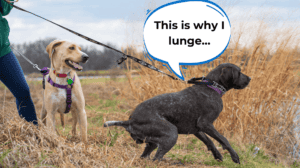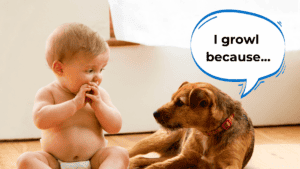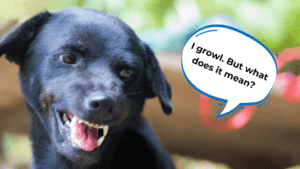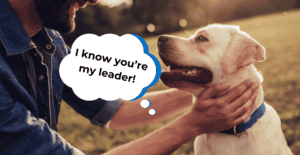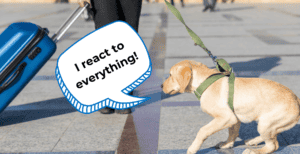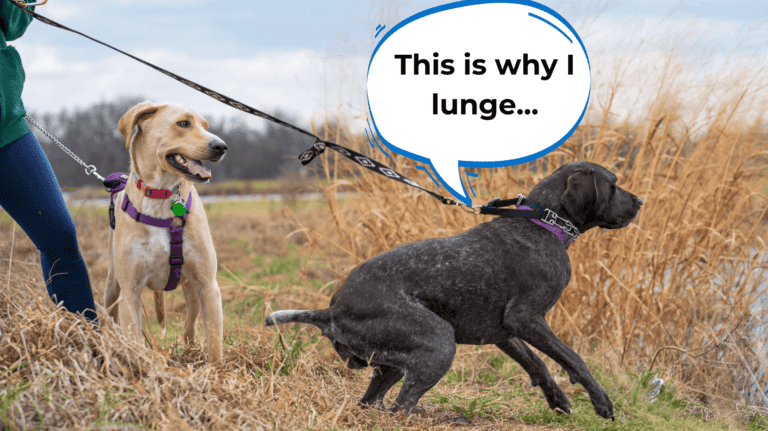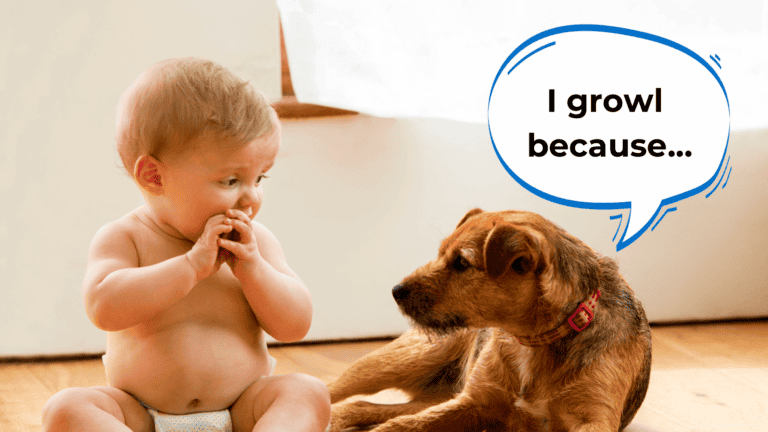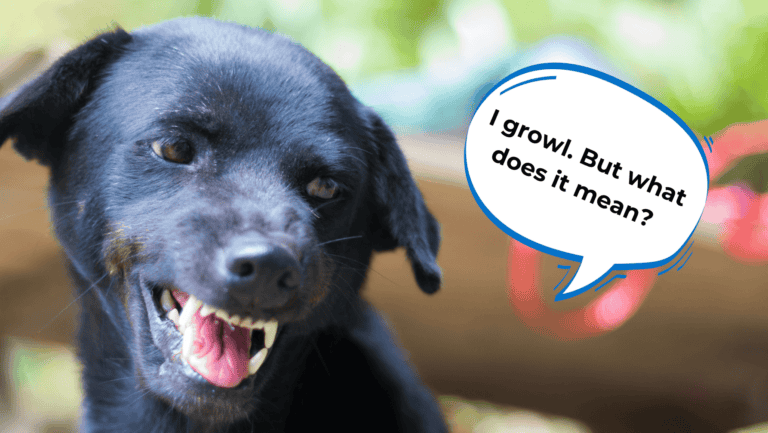The best way to know how to walk a dog is to understand this crucial principle:
In every walk, there’s a follower, and a leader.
And most of the time, the leader is NOT you.

“What do you mean, Dan? Are you saying that even if I hold the leash, I’m still not in control?”
That’s right!
Which explains why dogs tend to pull ahead of you on the leash, or become so uncontrollable during the walk — stopping to sniff wherever they want, lunging at other dogs — they think they’re the CEO of the walk, and you have to follow them.
But here’s the thing: it’s SO HARD to know when you start to lose control and when your dog begins to take over.
This shift in leadership can be very subtle, but really impactful. And the problem is so common, I see thousands of dog owners struggling with it everyday.
For this reason, I created Doggy Dan Golden Rule #5 which aims to help dog owners tell their dogs “Hey, I know we’re not at home anymore but I’m still the leader here.” And when dog owners take charge of every walk, they enjoy a calmer, happier outing with their dogs.
Read on to learn more.
Key Takeaways:
- Walking your dog gives you an opportunity to show to your dog that you’re in charge… even outdoors!
- If you want a calmer, less aggressive dog the most important thing to do is to show your dog that you’re in charge of the walk.
- For Doggy Dan Rule #5 — How to walk your dog — to work, you need to put the first four rules in place.
JOIN MY FREE REACTIVITY CLASS
Table of Contents:
- A Recap of The First Four Golden Rules
- Rule #5: How to Walk Your Dog To Help Them See You’re In Charge
- How to Walk Your Dog: What Goes Wrong Before A Walk
- Dog Psychology: How to Walk Your Dog the Better Way with Doggy Dan Golden Rule #5
- Structured Walk Vs. Social Walk
- 4 Helpful Tips on How to Walk Your Dog From a Top Dog Trainer
- Learn How to Walk Your Dog the Right Way with Doggy Dan Rule #5!
A Recap of The First Four Golden Rules
I always remind dog owners who want to know how to walk dogs better that Golden Rule #5 works so much more when the first four rules have been put in place.

If you haven’t checked them out yet, here’s a quick recap.
Rule #1: Controlling the Food
Your dog has to know that you have the ABSOLUTE control over food. You can find more about Rule #1 here.
Rule #2: Delaying Acknowledgement After Separation
If your dog jumps on you after separation, is that an expression of love or a challenge to your leadership? Rule #2 is about establishing your role as the pack leader through delaying acknowledgement after separation.
Rule #3: Your Terms
To become the reliable, trustworthy pack leader in your dog’s eyes, you and your dog MUST DO EVERYTHING in your terms.

Rule #4: Dealing with Danger
Stop barking and aggression by showing your dog when it comes to danger, YOU’RE THE ONE IN CHARGE AND YOU’RE THE DECISION MAKER. Not them.
Learn about the power of Rule #4 here.
Rule #5: How to Walk Your Dog To Help Them See You’re In Charge
Just like with the first four rules, the fifth rule in the Doggy Dan Five Golden Rules zeroes in on making sure YOU establish yourself as the leader by taking control of the walk.

While the first four rules help you become the pack leader inside the house, the fifth rule communicates to dogs that you’re still the pack leader even if you are outside the property.
It’s you who is in charge, so it’s you they should listen to, depend on to, and obey.
Think about this: Ultimately, we want a calm dog who follows our directions, and does not come with a high-strung, protective energy during the entirety of our time outdoors.
And for that to happen, our dogs should know that they are not in charge. They also don’t call the shots before and during the walk.
(Watch the full video about Rule #5 below)
The Doggy Dan Golden Rule #5 consists of three pillars that can help you take control of your walk..
Pillar #1: You Control the Walk, You Control the Energy
Your dog has different energy levels. The higher the energy level, the more your dog will exhibit behavior that includes high-strung energy, aggressive lunging and pulling, and ignoring commands.
Ideally, you would aim for an energy level of one or two (three max!) when going for a walk. And the way to retain this calm energy is to show that you’re in charge of when, where, and how you want your walk to happen.

A spike in your dog’s energy usually happens when dogs feel like you have given control away to them.
This includes submissively giving in to your dog's request to be walked and letting them decide when to go, rewarding your dog's hyperactive enery, and encouraging them to dictate where to go on the walk.
BUT When your dog sees that you are the ultimate decision maker, your dog will remain calm all throughout, and will be receptive to your instructions.
Pillar #2: You Set the Rules on What’s Acceptable or Not
You must understand that your dog has to see you’re firm in things that are acceptable or not.
This means clearly communicating IT’S YOUR WALK to your pet, through postponing the walk until they calm down, or stopping the walk mid-way if they start showing rowdy or uncontrollable behavior.

Your dog needs to know that if they want walkies, they have to follow the rules that you have set. Otherwise, the walk may not happen!
LEARN THE DOG CALMING CODE (FOR FREE)
Pillar #3: You Are the Decision Maker, Your Dog Has to Know That
When it comes to which route to take, your dog has to know it’s going to be your call.
When to walk? Absolutely on you.
The pace? The directions? The frequency? All of these are your call, and your dog should clearly know this.
And when your dog knows they have NOTHING TO WORRY ABOUT on the walk — that you decide what’s dangerous, not them — they can chill out and follow you.
How to Walk Your Dog: What Goes Wrong Before A Walk
Even before you take the first step of a walk, the question of “Who leads?” has already been answered.
What you do BEFORE THE ACTUAL WALK is a great predictor of how your walks will go.

From experience, most dog owners get confused by this!
“I’m not the one with a leash on, my dog is. What do you mean I’m not in control?’
Let me answer that with three questions:
- Who dictates where to go?
- Who sets the energy?
- Who calls the shots on how the walk will happen?
FREE REACTIVITY MASTERCLASS
If you answered “My dog” to one or all of these questions, you’re not the one in control of the walk.
Some people may say:
- My dog is just unsocialized!
- Our walks are full of distractions, my dog can’t stay calm.
- Morning walks make my dog more excited!
But here’s the bottomline: when your dog thinks they’re in charge, the walk comes with an overly high energy, an uncontrollable, leash pulling dog, and often, non-stop barking.
So what actually causes you to lose control of the walk BEFORE IT EVEN STARTS?
If You Do These Things Before You Walk Your Dog, You Have Already Lost Control
#1: Letting the Dog Dictate When You’re Going for a Walk
Barking, nudging, and even getting your attention by scratching the door are some of your dog’s ways of telling you “Hey, it’s time for my walk.”
It communicates “I want to go for a walk and I want it now. I am making the call here and if you say yes, I will be in control, not you.”

If you respond to their demands with “Sure, buddy” it’s telling your dog “Sure, it’s your call! You can do whatever you want with your walk.”
#2: Rewarding Hyperactive Behavior
Dogs get energy spikes when they feel like you are rewarding their frenzied behavior. Remember, rewards make dogs think they should carry on with what they are doing.
Here’s an example…
Let’s say your dog peeked through the window and saw their best buddy across the road…
They start running to you with a noticeable increase in energy.
You stand up to get the leash. Dog gets more energy spike because you rewarded their behavior.
It’s taking you a while to get the leash, and by this time, your dog starts to think “they responded when I showed excitement. Let me do it again!”
And so your already-excited dog turns the energy up a notch.
Guess what happens if you also hurried to the door? You’re going to walk out the house with a dog who’s overexcited, thinks they’re in control, and who thinks listening to your commands is not all that necessary!
GET MY 5 GOLDEN RULES FOR FREE!
#3: Not Having the First Four Golden Rules in Place
This is very important: unless you have not established following Rules #1 to #4, it will be a LOT more challenging to show you’re in charge.
In your dog’s mind, they will be thinking “I’m pretty much in charge with my food, and my demands for attention are always granted. SO WHY SHOULD I LISTEN TO MY OWNER DURING MY WALK?”

However, once your dog starts to see that you’re in charge around the house, it will be easier for your dogs to follow your cues and respect your leadership during your walks.
Dog Psychology: How to Walk Your Dog the Better Way with Doggy Dan Golden Rule #5
#1: Not Responding To Your Dog’s Cues Shows That YOU Are in Control
If your dog is agitated because they’re pushing you to hurry out, don’t respond. Don’t reward. Don’t move forward.
Your dog should know they don’t make the decisions for your walk. They can bark, nudge, run up and down, and even scratch on the door, but you’re not going to yield ever.
What you can do is wait for five to ten minutes or until your dog calms down before you go or resume the walk.
#2: Communicate to Your Dog that Frenzied Energy Does Not Merit Reward or Progress
Dogs are really simple!
If your dog feels rewarded even after a hyperactive jumping spree, they will continue doing it.
However, if you want a more chill dog, you have to reward calm behavior (AKA: letting dogs know that unless they’re more relaxed and calmer, no walk will happen!)

If you want your dog to be calm and not aggressive while you’re outdoors, you have to be absolutely clear that those behavioral issues are unacceptable.
Your dog will eventually see which behavior to master if they want time outdoors.
REVERSE REACTIVITY (FREE WEB CLASS)
#3: Stopping Mid-Walk Is a Great Way to Regulate Energy Levels During the Walk
Let’s say your dog showed calmer energy when you started your walk then suddenly starts acting restless?
What I recommend is to address this change of energy in a calm way. I’ve seen dog owners become stressed and shouty. This will aggravate the dog even more.
Stopping the walk is one of the best ways to let a dog know “We’re not going forward unless you calm down.”
If your dog eventually relaxes, you can continue the walk.
#4: You Make Your Dog Know You’re In Charge When You Show Them Any Decision You Make MUST be Followed
There’s a trick I follow that does not make sense in the eyes of people, but is powerful when viewed in the lens of dog psychology.
It’s this: taking a few steps forward, then doing a complete 180 and heading home.
“What? Why would I do that, Doggy Dan?”
It will let your dog know that YES — you are the ultimate decision maker. And any decision you make is final and will be followed.
#5: Winning The Walk Starts Before You Leave the House and Within the First Five Yards
Before you step out the door, be clear with that it’s you who leads the walk.

You can be clear about this by making sure that from the beginning, you don’t let your dog make ANY DECISION. Every aspect of your walk will be decided by you.
Structured Walk Vs. Social Walk
The Structured Walk
The structured walk is where you establish your authority with your dog.
In this walk, you are more particular with where your walks are going, and whether or not your dog is following your commands.
The Social Walk
On the other hand, the social walk is about allowing your dog to have fun and interact. During the social part, dogs can freely do what they like, enjoying their freedom.
How to Interchange Both Without Losing Charge
It's crucial for you to decide when to switch between structured and social phases. You have the control over this transition. For instance, you might have your dog on a structured walk for a short period.

After that, you can give them the command to be free. They might still be on a long leash, but you grant them the freedom to explore and engage with their surroundings. Then, you can bring them back to a structured walk by using commands like “walk” or “heel.”
It's essential to avoid mixing up the two styles, where the walk seems social but lacks the structured moments.
To achieve the balance, there must be segments in the walk, preferably at the beginning and the end, where you assert your authority and the dog recognizes your leadership.
4 Helpful Tips on How to Walk Your Dog From a Top Dog Trainer
Tip #1: You Can Use Treats and Rewards to Make Your Dog Walk Next To You
Now it’s very important that your dog walks next to you because it’s hard to lead from behind.
There are plenty of ways to get your dog to walk right by your side. One you can try is using treats or rewards to reinforce correct behavior.
REACTIVITY SOLVED (NO FOOD, NO FORCE)
Tip #2: The 360-turn.
Here's another neat trick: imagine your dog is on your left side.
Instead of going right, just go left and spin around. First, go left in front of your dog, then do it again, and even turn your dog a bit. This makes your dog slow down. If your dog's on your right, do the same thing but turn right. Don't make it easy for your dog all the time. Spin around in front of them. Show them that you are in control of where you’re going.
Tip #3: Use the Correct Harness
I prefer an easy walk harness, also known as a front clip harness like the Doggy Dan No Pull Harness. It's the best option.

When selecting your walking device, consider the choice carefully. Some use prong collars or devices that dogs dislike on their face.
If your dog hates a muzzle strap-type device, it's better to avoid it. I've discovered a much more effective device that dogs adore, you can check out the product here.
Tip #4: Go for Simple Commands That Your Dog Already Understands
You can give your thigh a friendly pat and say something like “walk” or “heel.”
Just be sure your dog really gets what “heel” or “walk” means. You could practice this at home first.
This allows them to see you’re making the shots, and helps them follow walking cues from you easily.
GET THE DOG CALMING CODE™
Learn How to Walk Your Dog the Right Way with Doggy Dan Rule #5!
If you view it through the lens of dog psychology, a walk is not just a walk!
A walk is actually a great opportunity for you to show your dog that you’re still in charge even outside the home.

If you walk your dog the right way, you can have a dog who walks calmly wherever you go, who doesn’t bark at random strangers and other dogs at the park, and one who follows your commands wherever you go.
Isn’t that every dog owner’s dream?
With the Doggy Dan Golden Rule #5, it can be your reality.
Now, really owning the walk requires that you do it right, every time. Which also means you do things correctly every step of the way.
I know there are plenty of questions around mastering Doggy Dan Golden Rule #5. I encourage you to learn its full details through the Dog Calming Code!
In my course, you’ll learn answers to questions like:
- How do I make sure I train my dog correctly for the walk while we’re still at home?
- Do I have to follow a structured walk all throughout the walk? When do I switch?
- Should I not take my dog for a walk on the lead until he is walking properly beside me?
- What does SSCD mean?
- How do I know if the dog is challenging my leadership?
- How do I get my dog to heel?
- Can I call their name when the walk is unstructured?
- Do I use timeout if my dog keeps barking before we start walking?
And many more.
If you want to know how to win the walk with your dog, please check out the Dog Calming Code now.
To happier, healthier walks!

~ Doggy Dan




